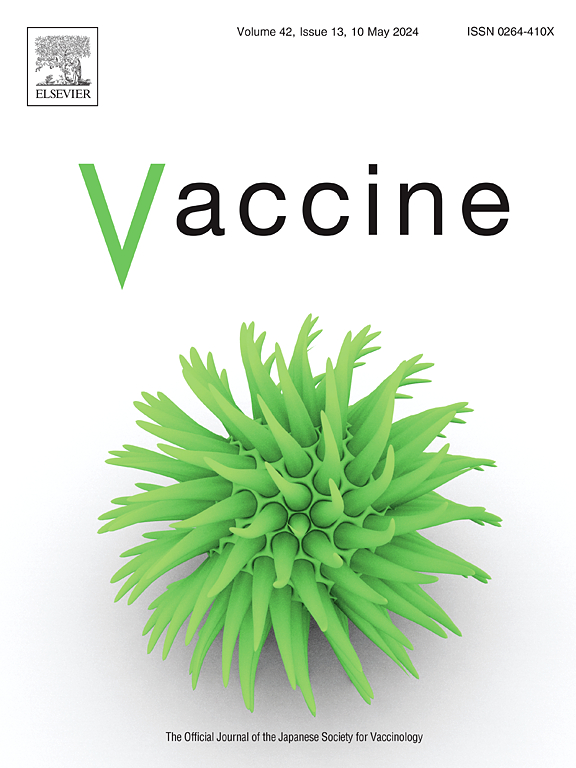COVID-19完整病毒颗粒灭活疫苗制备方法的优化
IF 4.5
3区 医学
Q2 IMMUNOLOGY
引用次数: 0
摘要
严重急性呼吸综合征冠状病毒2型(SARS-CoV-2)病毒颗粒结构难以维持,这可能与2019冠状病毒病(COVID-19)灭活疫苗免疫原性较低有关。我们之前已经证明,病毒颗粒的完整结构对于流感灭活全病毒颗粒疫苗(WPV)具有免疫原性效力至关重要。在这里,我们测试了37、35、33和31°C作为病毒的繁殖温度,以及在离心纯化之前和之后对病毒进行甲醛处理的时间,以获得结构完整的病毒颗粒。在33℃条件下培养的病毒颗粒表面保留的刺突蛋白最多。在离心纯化过程中,用甲醛对病毒进行预处理可防止刺突蛋白与病毒表面分离。在小鼠模型中评估了制备的疫苗的免疫原性,包括完整的WPV和失去刺突蛋白的非完整的WPV。单剂量完整的WPV与非完整的WPV相比,有效地诱导了体液免疫,这表明了更高的中和抗体滴度。在病毒攻击后,与未接种完整WPV疫苗的小鼠相比,接种单剂量灭活完整WPV疫苗的小鼠体重减轻程度较轻,肺部病毒滴度较低。这些结果证明了WPV结构完整性在诱导有效和保护性免疫中的重要性,并为COVID-19 WPV的实际应用提供了重要的见解。本文章由计算机程序翻译,如有差异,请以英文原文为准。
Optimization of the preparation method of inactivated intact virus particle vaccine for COVID-19
It has been recognized that it is difficult to maintain the virus particle structure of severe acute respiratory syndrome coronavirus 2 (SARS-CoV-2), which may be associated with lower immunogenicity of inactivated vaccines against coronavirus disease 2019 (COVID-19). We have previously demonstrated that an intact structure of the virus particles is critical for influenza inactivated whole virus particle vaccine (WPV) to be immunogenically potent. Here, we tested 37, 35, 33, and 31 °C for the virus propagation temperatures and the timing of formaldehyde treatment of the virus before and after centrifugation-based purification to obtain virus particles with an intact structure. Virus particles cultured at 33 °C retained spike proteins on the surface the most abundantly. The pretreatment of the virus with formaldehyde prevented the dissociation of the spike proteins from the viral surface during the centrifugation-based purification. The immunogenicity of the prepared vaccines, intact WPV and non-intact WPV that had lost the spike proteins, was evaluated in a mouse model. A single dose of intact WPV effectively induced humoral immunity compared to non-intact WPV, as indicated by higher titers of neutralizing antibodies. After a virus challenge, the mice vaccinated with a single dose of inactivated intact WPV showed less severe weight loss and lower virus titers in the lungs compared to those vaccinated with non-intact WPV. These results demonstrate the importance of the structural integrity of WPV in inducing effective and protective immunity, and provide significant insight into the development of COVID-19 WPV for practical use.
求助全文
通过发布文献求助,成功后即可免费获取论文全文。
去求助
来源期刊

Vaccine
医学-免疫学
CiteScore
8.70
自引率
5.50%
发文量
992
审稿时长
131 days
期刊介绍:
Vaccine is unique in publishing the highest quality science across all disciplines relevant to the field of vaccinology - all original article submissions across basic and clinical research, vaccine manufacturing, history, public policy, behavioral science and ethics, social sciences, safety, and many other related areas are welcomed. The submission categories as given in the Guide for Authors indicate where we receive the most papers. Papers outside these major areas are also welcome and authors are encouraged to contact us with specific questions.
 求助内容:
求助内容: 应助结果提醒方式:
应助结果提醒方式:


